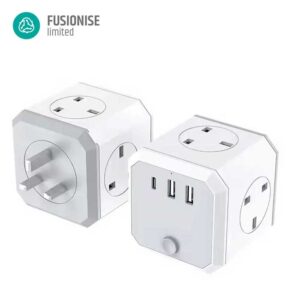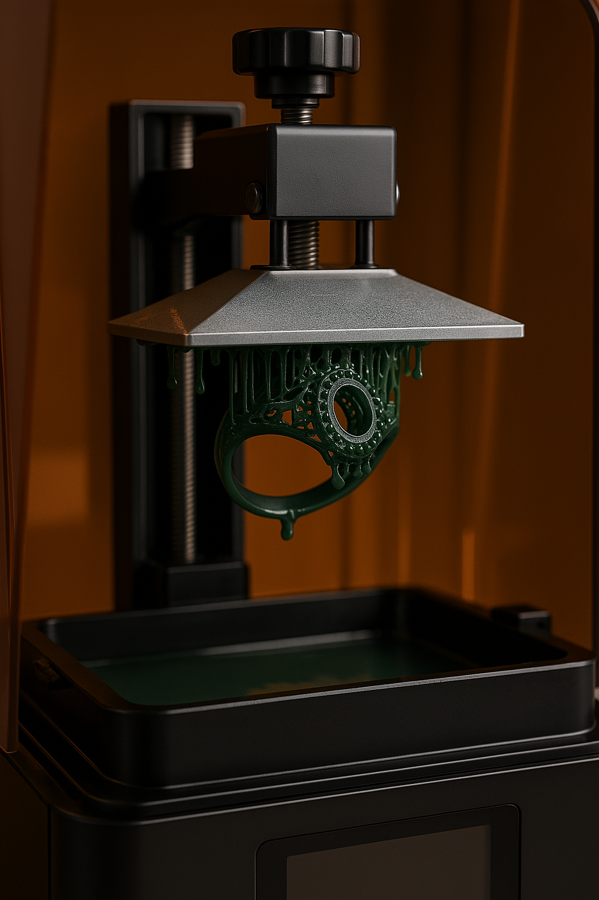Total: £12.95

Selecting the right nozzle is a critical aspect of 3D printing that directly influences print quality, speed, and material compatibility. With a variety of nozzle types and materials available, making an informed decision involves understanding both the technical characteristics of the nozzles and the specific requirements of your projects. This article provides a comprehensive guide on how to choose the ideal nozzle for your 3D printer, covering key areas from different nozzle types to practical selection tips.
1. Overview of Nozzle Types
Understanding the different types of nozzles available is the first step in making the right choice for your 3D printer.
1.1 Brass Nozzles
Description:
Brass nozzles, such as the popular MK8, are widely used in FDM 3D printing. Brass is an excellent conductor of heat, meaning these nozzles heat up quickly and maintain a consistent temperature throughout the print. This results in smooth extrusion and minimizes the risk of clogs.
Advantages:
- High Thermal Conductivity: Quickly reaches and maintains the desired temperature.
- Cost-Effective: Generally more affordable than nozzles made from harder materials.
- Ease of Use: Their universal design makes them compatible with many printer models and easy to replace.
Limitations:
-
- Wear Issues: Being relatively soft, brass nozzles may wear down faster, especially when printing with abrasive materials such as carbon fiber or glow-in-the-dark filaments.
- Limited Durability: Frequent use with abrasive filaments can lead to more frequent nozzle replacements.
1.2 Hardened Steel Nozzles
Description:
Hardened steel nozzles are designed for durability. They are ideal for high-wear applications and abrasive materials that would quickly erode a brass nozzle.
Advantages:
- Superior Durability: Resistant to abrasion and suitable for long-term use in demanding applications.
- Extended Lifespan: They can handle tough materials without degrading, which reduces downtime and maintenance costs.
Limitations:
- Lower Thermal Conductivity: These nozzles do not transfer heat as efficiently as brass, potentially requiring adjustments in printing temperature settings.
- Higher Cost: They are generally more expensive, which might be a consideration for hobbyists or low-budget projects.
1.3 Other Materials and Coated Nozzles
Ruby and Tungsten Carbide Nozzles:
- Description: These high-end nozzles offer excellent wear resistance and thermal performance. They are often used in industrial applications where both durability and precision are critical.
- Advantages: Extreme longevity, even with abrasive materials.
- Limitations: Significantly higher cost and specialized requirements.
Coated Nozzles:
- Description: Some nozzles feature special coatings designed to reduce friction or wear.
- Advantages: Can improve filament flow and extend the life of the nozzle.
- Limitations: The performance benefits vary, and coatings may wear off over time, requiring eventual replacement of the nozzle.
2. Key Factors to Consider
When selecting a nozzle, several critical factors should be evaluated to ensure that your choice meets your specific printing requirements.
2.1 Filament Compatibility
Material Type:
- Consider the type of filament you primarily use. Brass nozzles are excellent for standard filaments like PLA, ABS, and PETG, while hardened steel is better for abrasive filaments.
- Understand that the chemical composition and abrasive properties of different filaments can affect nozzle longevity and performance.
Application Needs:
- Evaluate whether your prints require high detail, durability, or a specific surface finish. Different filaments and nozzle materials may interact differently, influencing the final appearance and strength of the printed object.
2.2 Nozzle Diameter
Resolution vs. Print Speed:
- Small Diameters (e.g., 0.2mm to 0.3mm): These nozzles offer higher resolution and finer detail, making them ideal for intricate models or detailed prototypes.
- Large Diameters (e.g., 0.6mm to 0.8mm): These allow for faster printing and greater material flow, suitable for larger parts or functional prototypes where high resolution is less critical.
Impact on Layer Adhesion:
- The diameter of the nozzle affects the width of each extruded line, which in turn influences how well layers bond together. This is particularly important for parts requiring high strength and structural integrity.
2.3 Thermal Performance
Heat Transfer Efficiency:
- The nozzle material must effectively transfer heat to maintain a consistent extrusion temperature. Brass excels in this area, which is crucial for smooth, consistent prints.
- Evaluate whether your printer’s heating system can compensate for any lower thermal conductivity if you opt for a hardened steel nozzle.
Temperature Stability:
- Consistent temperature is vital for avoiding common printing issues like clogs or uneven extrusion. Consider the thermal mass of the nozzle and its ability to adapt quickly to temperature changes.
2.4 Durability and Wear Resistance
Usage Environment:
- For high-volume printing or when using abrasive materials, durability becomes a primary concern. Hardened steel nozzles or those with advanced coatings may offer the best performance.
- Consider the expected lifecycle of the nozzle in your specific applications. Frequent replacement of lower-durability nozzles can increase long-term costs and downtime.
Maintenance and Replacement:
- Factor in how often you are willing or able to replace the nozzle. A more durable nozzle may justify a higher initial investment if it reduces maintenance frequency.
2.5 Printer Compatibility
Hardware Integration:
- Ensure that the nozzle is compatible with your printer’s hotend design. Verify the thread type and dimensions to avoid installation issues.
- Some printers have specific nozzle designs, and using an incompatible nozzle can affect both print quality and printer safety.
Ease of Installation:
- Consider whether your printer allows for quick and simple nozzle changes. Ease of maintenance can be an important factor, especially if you need to switch between different nozzle types frequently.
3. Practical Tips for Nozzle Selection
Selecting the right nozzle involves not only understanding the specifications but also practical experimentation and research.
3.1 Experimentation and Testing
- Small Test Prints:
- Run small test prints when switching to a new nozzle type or diameter. This can help you fine-tune settings and verify that the chosen nozzle meets your quality standards.
- Document Results:
- Keep a record of different nozzle types and their performance under various conditions. This information can be invaluable for future projects and troubleshooting.
3.2 Consult Manufacturer Guidelines
- Printer and Filament Recommendations:
- Always refer to the manufacturer’s documentation for both your printer and the filaments you use. Manufacturers often provide optimal settings and compatibility information that can guide your selection.
- Community Feedback:
- Leverage online forums and user reviews to gather insights from others who have used the same nozzle types. Real-world experiences can highlight potential issues and benefits that may not be apparent from specifications alone.
3.3 Future-Proofing Your Setup
- Anticipate Needs:
- Consider not only your current projects but also future applications. Choosing a nozzle that can handle a variety of materials and resolutions may save time and money in the long run.
- Versatility:
- If you foresee the need to print with both standard and abrasive materials, you might consider having multiple nozzle types on hand for different projects.
4. Conclusion
Choosing the right nozzle for your 3D printer is a multifaceted process that requires a careful balance of filament compatibility, nozzle diameter, thermal performance, durability, and printer compatibility. The brass MK8 nozzle is an excellent choice for many standard applications due to its affordability and excellent heat transfer, while alternatives like hardened steel or coated nozzles may be better suited for abrasive or high-volume printing.
By comprehensively evaluating your printing needs and considering both current and future requirements, you can select a nozzle that not only enhances print quality and efficiency but also contributes to the overall longevity and reliability of your 3D printing setup. Experimentation, thorough research, and adherence to manufacturer guidelines are key to making an informed decision. Ultimately, the right nozzle will empower you to achieve superior print quality and unlock the full potential of your 3D printer.
Happy printing, and may your projects be successful and innovative!





2 Comments
Choosing the right nozzle is essential for achieving high-quality 3D prints. It’s important to consider factors like material compatibility, nozzle diameter, and thermal performance. Experimentation and research can help you find the best nozzle for your specific needs. Don’t forget to check manufacturer guidelines for optimal results. How do you determine which nozzle type is best for your 3D printing projects?
**Вопросы на comprehension:**
1. What are the critical factors that influence printers’ print quality, speed, and material compatibility?
2. What are the key factors to consider when selecting a nozzle for your 3D printer?
3. Why is the brass MK8 nozzle a good choice for many standard applications?
4. What is the importance of experimentation and research in selecting the right nozzle?
**Вопрос on the text:**
Why is addressing the compatibility of filament compatibility crucial in selecting the nozzle for your 3D printer?